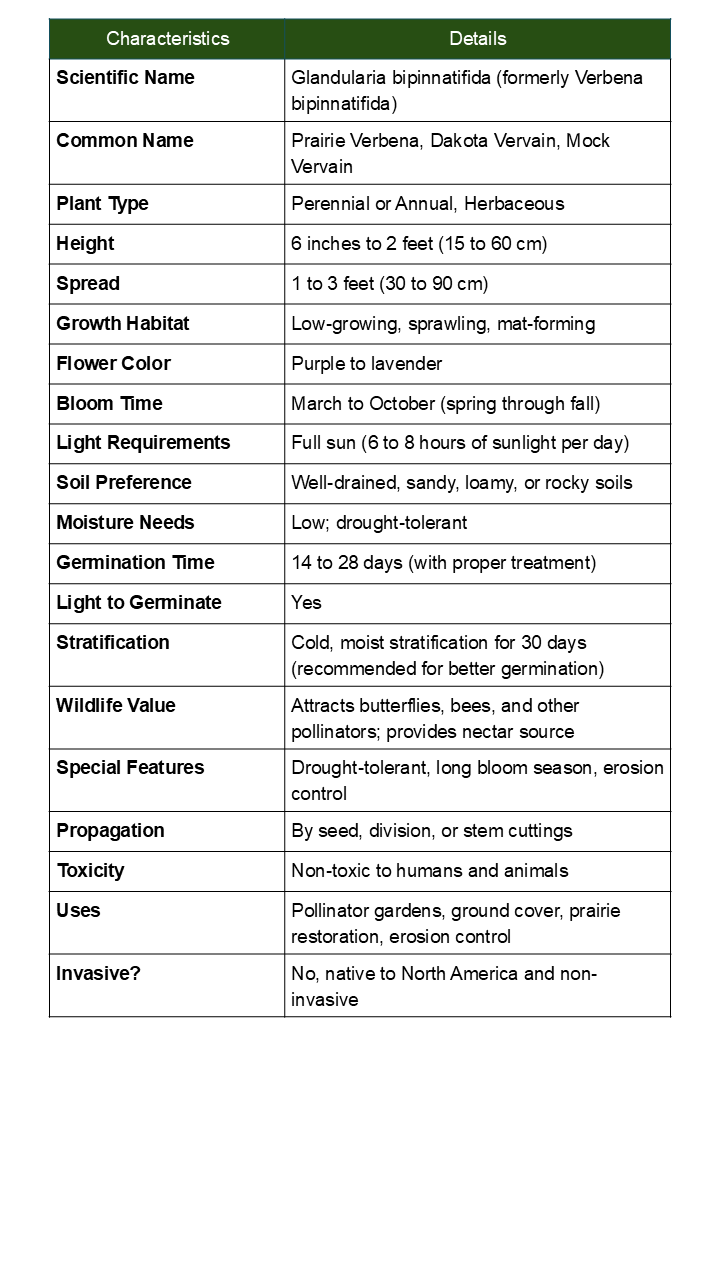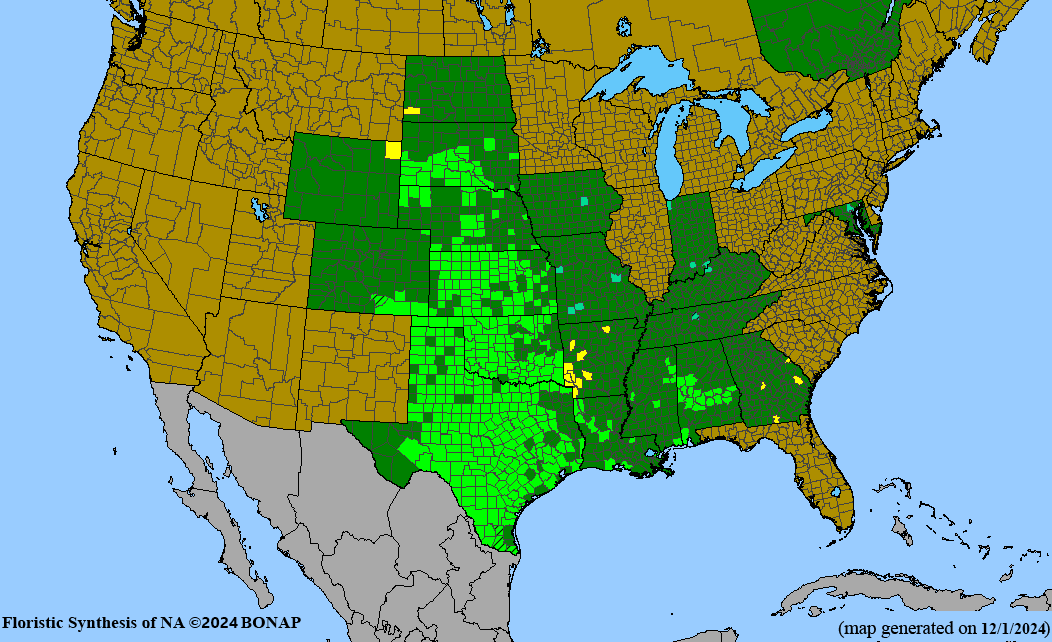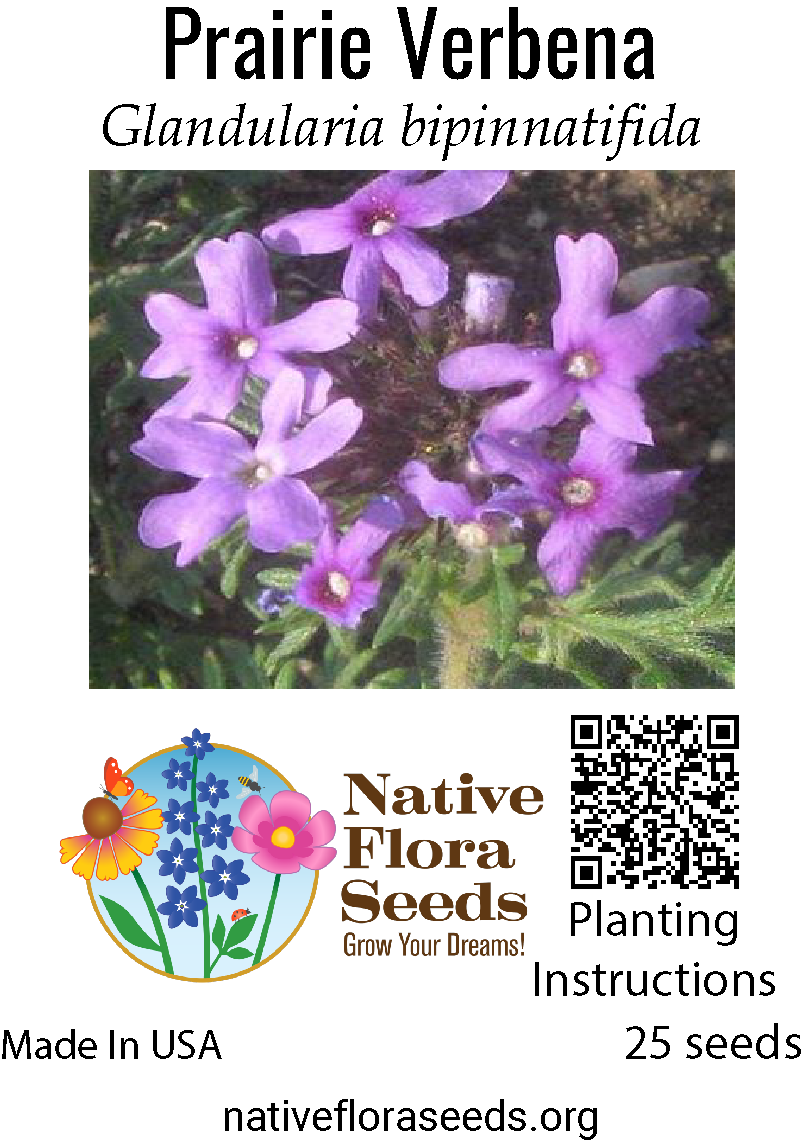Prairie Verbena Seeds - Native Wildflower (Glandularia bipinnatifida) for Continuous Blooming Gardens
💜 Experience the Vibrant Beauty of Prairie Verbena
Discover the spectacular charm of Glandularia bipinnatifida, also known as Dakota Mock Vervain, a stunning native perennial that creates masses of vibrant purple flower clusters from spring through fall. This low-growing, spreading wildflower brings continuous color and exceptional wildlife value to your garden with minimal care required.
✨ Key Features:
- Height: 6-12 inches tall with spreading, mat-forming habit
- Bloom Time: April through October (continuous blooming)
- Flower Color: Vibrant purple-pink clusters
- Native Range: Central United States south to Nicaragua
- Hardiness: USDA Zones 4-10
- Sun Requirements: Full sun to partial shade
🦋 Outstanding Wildlife Benefits:
- Essential nectar source for butterflies, native bees, and beneficial insects
- Attracts hummingbirds with its tubular flowers
- Long blooming period provides consistent pollinator support
- Seeds provide food for birds through fall and winter
- Supports declining native pollinator populations
🌱 Easy Growing Guide:
- Soil: Well-drained soils, tolerates poor and rocky conditions
- Drought Tolerance: Excellent once established
- Maintenance: Low maintenance, may spread by runners
- Germination: Surface sow, needs light to germinate
- Spacing: Plant 12-18 inches apart for groundcover effect
🏡 Perfect Garden Uses:
Ideal for groundcover, erosion control, rock gardens, cottage gardens, and naturalized areas. The spreading habit and continuous blooms make it perfect for challenging sites and pollinator gardens.
Create stunning continuous displays while supporting pollinators from spring through fall. This resilient native brings vibrant color and ecological value to sustainable gardens with minimal maintenance.
FREE SHIPPING WITHIN USA



